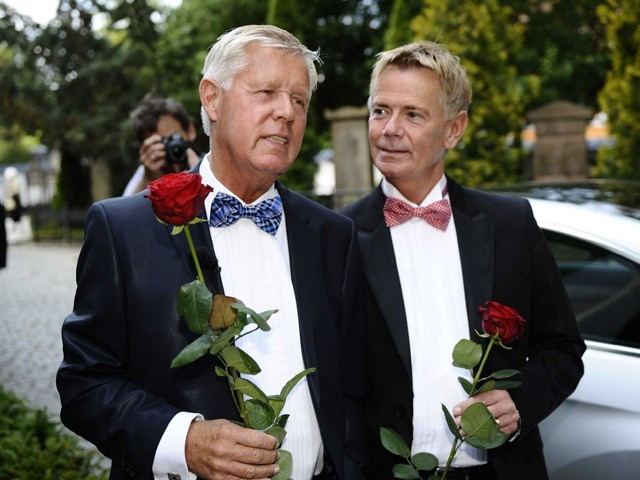Many heterosexual couples are altering their own marriage vows in support of marriage equality. That means a lot to Danielle Buhagiar – who would like to throw a killer wedding of her own
The wedding was in Red Hill, a picturesque little town nestled in Melbourne’s Mornington Peninsula. The ceremony blended elements of the bride’s Jewish heritage with some of the more flamboyant flourishes of her professional life in the theatre.
Under a traditional Chuppah wedding canopy, the female celebrant led the couple to circle each other, an act usually reserved solely for the wife-to-be. A glass was smashed to a chorus of mazel tov and later groups of dancers hoisted the newly-weds into the air on chairs. Throughout the day there was a lot of laughter, a lot of tears and a lot of fabulous outfits.
I’m gay and I love weddings. Except for the part in every ceremony where I’m reminded that I can’t have one. But it’s inspiring to see more and more supportive heterosexual couples are teaming up their vows with a statement about equal marriage rights.
The most poignant moment for me at the Red Hill wedding came just before the vows, during the official part of the ceremony known as the “monitum”. The term translates from Latin to mean “a warning”.
In every official Australian wedding, the celebrant is required to remind the guests that:
“Marriage, according to law in Australia, is the union of a man and a woman to the exclusion of all others, voluntarily entered into for life.”
While those words were being read the bride turned around to the big group of gays in the room, which included some of her closest and oldest friends, and mouthed an apology.
The Australian Marriage Act states that every official marriage ceremony (other than those officiated by a religious minister) needs to include those words and the celebrant made it clear that she was only reading them because it was required to validate the marriage.
My female partner and I had heard those words before and knew to expect them. We also knew to expect that uncomfortable feeling that comes each time they’re recited and we’re reminded once again that relationships like ours can’t be celebrated with a ceremony like this.
But this time, on the request of the bride and groom, the celebrant expressed a hope that one day Australian marriage laws would change to be more inclusive of all the relationships represented in the room.
Other progressive and sensitive friends of mine have had similar statements made at their weddings. They recognise that those words and the current marriage laws set up a hierarchy of relationships.
They also know that their gay friends would put on killer wedding parties if they were allowed and believe that they should have just as much right to wear killer heels down the aisle if they choose, regardless of their gender or that of their partner.
Some heterosexual couples like the Australian Rugby star David Pocock and his partner Emma have publicly stated that they won’t get married until their gay friends have that right too. It’s a decision that’s incredibly magnanimous and it means a lot to the marriage equality movement and to people like me.
Weddings are fabulously fun and such a special celebration of two people intensely in love. They bring together families and friends from all over the world for a big group love-in that inevitably ends in lasting friendships and memories. Weddings are too good to give up. In fact, I’d like to encourage more of them.
And with all that love in the air, perhaps wedding ceremonies are the perfect place to do some gentle persuading. At that pivotal moment when everyone in the room is captivated by an incredible love story, a small statement about unfair laws that diminish other loving relationships can be a really powerful thing. It might change a few minds and one day it might even lead to a change in legislation.
Until that happens, wedding ceremonies will be a constant reminder to gay people that they’re different and that their relationships aren’t considered significant enough to deserve such a special celebration.
Photo: AP
Author: Danielle Buhagiar
Publication: newmatilda.com
Date: 27 November 2013
Read original article here

